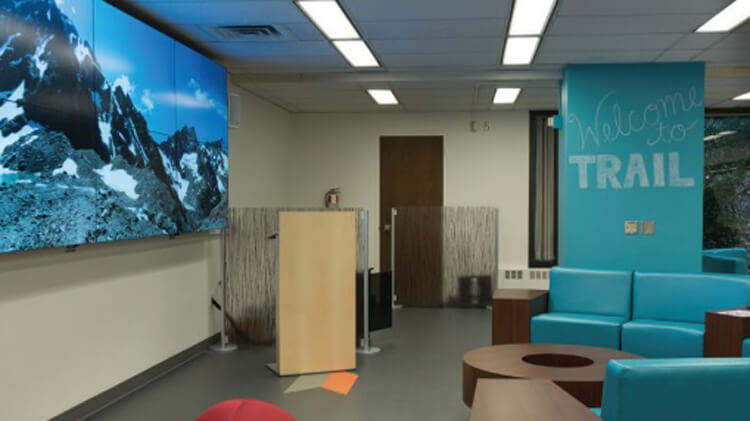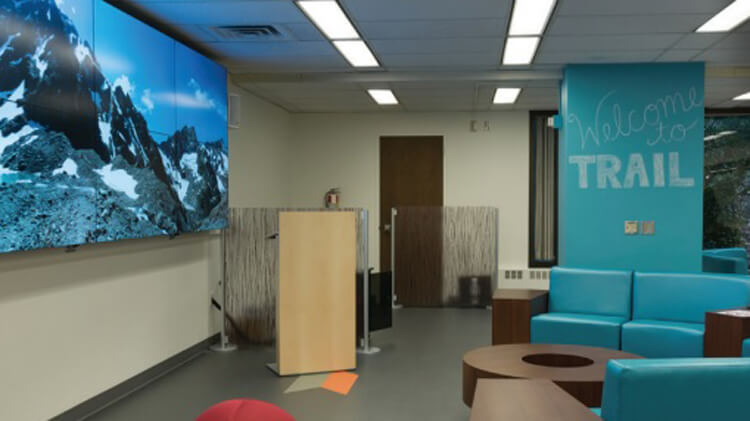- In a simpler, less connected time college students studying for a mid-term exam or working on a joint paper might occupy a table at an off-campus coffee shop, empty corner of the cafeteria or a study room in the library. Today, they seek out huddle spaces that offer more than just a quiet place to work with the right balance between content and connectivity.
Whether it’s screen-equipped nooks in the basement of University of Michigan dorms for students to prepare their homework or interactive events at the connected conference rooms at the Illinois Institute of Technology’s University Technology Park, the goal is the same: provide the technology infrastructure to allow small groups to work together and collaborate.

The University of Washington’s Translational Research and Information Lab (or TRAIL for short) takes digital collaboration to a new level. Located in the school’s Health Sciences Library, it has state of the art digital equipment to help students and instructors do everything from mapping the circulatory system to participating in simulated operations.
The center of attention is TRAIL’s display wall. Composed of a two-by three array of NEC X555UNV screens, each 55-inch display has a narrow bezel that is barely noticeable, and the installation required a custom frame around its perimeter.
At 157-inches, the composite display has an overall resolution of 5,760 by 2,160 pixels, outdoing the output of any single projector or display. In other words, it’s nothing short of a digital immersion zone.
The TRAIL huddle space has its creature comforts as well, like the bright blue semicircular couch. It seats six facing the data wall for participants to relax as they watch the visual magic unfold.
It can even integrate augmented or virtual reality for students to visualize detailed aspects of biology and the human body. All the leader does is slip on an HTC Vive or Oculus Rift VR headset, fire up the software and everything shown on the goggles is replicated on the big screen for all to see. This can be anything from flying around microscopic proteins to rotating a CAD image of the human heart as if it were in the leader’s hand.
In addition to a lectern, microphone and wall-mounted speakers, the TRAIL huddle space includes all the expected amenities, including a 360-degree camera and Polycom conference phone. The room has no shortage of AC outlets for charging up. At any time, a participant can connect their computer to the wall display via a rolling cart with video inputs for PCs and Macs as well as an Apple TV receiver for student iPads and iPhones. Potentially overwhelming for the uninitiated, The TRAIL tech is well integrated through a touchscreen on the cart for selecting inputs and the type of display wanted. For instance, huddlers have the option of individually addressing each panel with a separate data stream so that group efforts can be compared. Or, the whole array can be addressed as a single screen for showing the (really) big picture.
It all comes together with group projects where the TRAIL room lets participants try out their portions on the others, while editing and integrating different portions. All they have to do is reserve the room and have their ideas ready.
